
Min/Max Time :
15 / 45
Minutes
MapCode :
243 886 759*88
Phone :
083-825-1750
Description :
UNESCO World Heritage Site, part of Japan's Meiji Industrial Revolution: Iron and Steel, Shipbuilding and Coal Mining.
Also called Shizuki Castle. Built in 1604 by Mori Terumoto after his loss at the Battle of Sekigahara. His descendants continued to rule the Choshu Domain until the Meiji Restoration (1868-1912). The castle was reduced to ruins in 1874. It was unusual in that it was constructed at the base of Mount Shizuki, with only a few defenses on the mountain itself.
Also called Shizuki Castle. Built in 1604 by Mori Terumoto after his loss at the Battle of Sekigahara. His descendants continued to rule the Choshu Domain until the Meiji Restoration (1868-1912). The castle was reduced to ruins in 1874. It was unusual in that it was constructed at the base of Mount Shizuki, with only a few defenses on the mountain itself.
Hours :
Open daily 24/7
Address :
500 Horiuchi, Hagi-shi, Yamaguchi-ken 758-0057, Japan
62.7
km / 39.0
miles
-
(1
hours 20
minutes)

MapCode :
277 312 331*58
Phone :
085-631-1860
Website :
Description :
Iwami Kagura performances every Sunday evening.
Hours :
Open daily 08:45 – 22:00. Closed Tuesdays.
Address :
5-15 Ariakechō, Masuda, Shimane 698-0022
2.4
km / 1.5
miles
-
(7
minutes)

MapCode :
277 342 720*88
Phone :
085-624-0500
Website :
Description :
Sesshu (1420-1506), the founder of Japanese ink painting.
Hours :
Open daily 09:00 – 17:00. Closed Tuesdays and Wednesdays.
Address :
A 1149 Otoyoshichō, Masuda, Shimane 698-0003
4.2
km / 2.6
miles
-
(9
minutes)

MapCode :
277 344 185*28
Phone :
085-622-1668
Description :
garden designed by Sesshu (1420-1506), the founder of Japanese ink painting.
Address :
4-29 Somebachō, Masuda, Shimane 698-0011
0.9
km / 0.5
miles
-
(3
minutes)

MapCode :
277 343 045*88
Phone :
085-622-0302
Description :
garden designed by Sesshu (1420-1506), the founder of Japanese ink painting.
Address :
25-33 Higashimachi, Masuda, Shimane 698-0004
94.8
km / 58.9
miles
-
(2
hours 37
minutes)
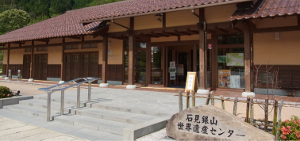

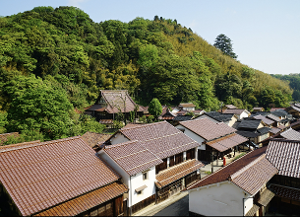
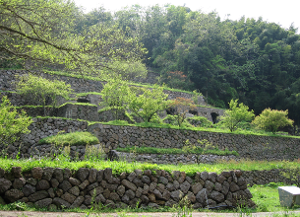
Min/Max Time :
60 / 180
Minutes
MapCode :
599 084 285*66
Phone :
085-489-0183
Website :
Description :
The Iwami Ginzan Silver Mine was an underground silver mine in the city of Ōda, in Shimane Prefecture on the main island of Honshu. It was the largest silver mine in Japanese history and was active for almost four hundred years, from its discovery in 1526 to its closing in 1923. The mines, mining structures, and surrounding cultural landscape — listed as the "Iwami Ginzan Silver Mine and its Cultural Landscape" — became a UNESCO World Heritage Site in 2007.
The mine was discovered and developed in 1526 by Kamiya Jutei, a Japanese merchant. Jutei later introduced a Chinese style of silver mining that would become the Haifukiho Method. The mine reached its peak production in the early 1600s, with approximately 38 tons of silver a year which was then one-third of the world's production.
Silver from the mine was used widely for coins in Japan. It was contested fiercely by warlords until the Tokugawa Shogunate won control of it in 1600 as a result of the Battle of Sekigahara in 1600. It was later secured by fences and barricaded by pine trees. Yamabuki Castle was built in the center of the mining complex.
Silver production from the mine fell in the 19th century, as it had trouble competing with mines elsewhere in the world. Mining for other minerals, such as copper, then replaced silver as the predominant material produced from the mountain. The mine was eventually closed in 1923.
Courtesy of Wikipedia
The mine was discovered and developed in 1526 by Kamiya Jutei, a Japanese merchant. Jutei later introduced a Chinese style of silver mining that would become the Haifukiho Method. The mine reached its peak production in the early 1600s, with approximately 38 tons of silver a year which was then one-third of the world's production.
Silver from the mine was used widely for coins in Japan. It was contested fiercely by warlords until the Tokugawa Shogunate won control of it in 1600 as a result of the Battle of Sekigahara in 1600. It was later secured by fences and barricaded by pine trees. Yamabuki Castle was built in the center of the mining complex.
Silver production from the mine fell in the 19th century, as it had trouble competing with mines elsewhere in the world. Mining for other minerals, such as copper, then replaced silver as the predominant material produced from the mountain. The mine was eventually closed in 1923.
Courtesy of Wikipedia
Hours :
Open 09:00-17:00 daily. Only accessible on foot, about a 2 km (1.3 mi) walk from the main road.
Address :
Japan, 〒694-0305 Shimane-ken, Ōda-shi, Ōmorichō, イ−1597−3
8.8
km / 5.5
miles
-
(10
minutes)
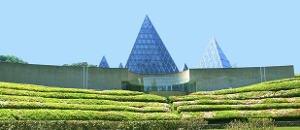

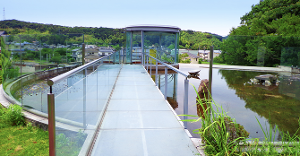

Min/Max Time :
15 / 60
Minutes
MapCode :
599 228 175*47
Phone :
085-488-3776
Website :
Description :
The Nima Sand Museum features a large hourglass mechanism that automatically rotates from December 31 to January 1. It is designated the largest hourglass in the world, but is not officially registered in Guinness World Records. This museum officially opened in March 1991.
This museum features sand comprising six large and small pyramids made of crystal glass. The world’s largest hourglass Sunagoyomi measures the duration of a year and is displayed in the center of the building.
This museum features sand comprising six large and small pyramids made of crystal glass. The world’s largest hourglass Sunagoyomi measures the duration of a year and is displayed in the center of the building.
Hours :
Open daily 09:00 – 17:00. Closed Wednesdays.
Address :
975 Tenkawachi, Nima-cho, Oda, Shimane 699-23005
44.1
km / 27.4
miles
-
(48
minutes)
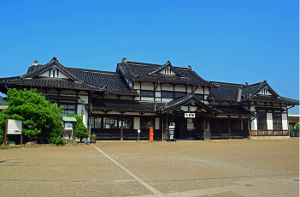
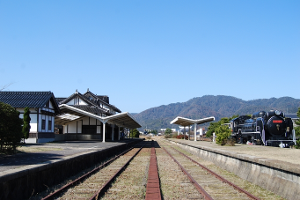
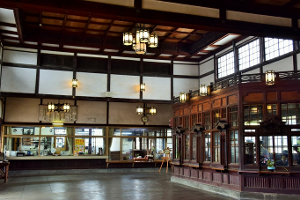
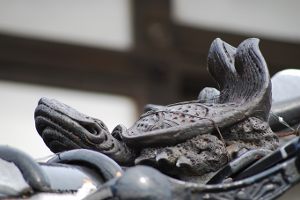
Min/Max Time :
10 / 30
Minutes
MapCode :
258 803 004*28
Phone :
085-321-6588
Website :
Description :
The Taisha Station building was completed in 1912 with the opening of the JNR Taisha Station, and was newly rebuilt in February 1924. It is a pure Japanese style, wooden one-story building that is suitable for the town of Izumo Taisha. The JR Taisha line was abolished on March 31, 1990, and the former Taisha Station building was designated as an Important Cultural Property of the country in 2004.
There are 30 Taisho-style lantern-shaped Japanese chandeliers hanging from the high ceiling. There are also two waiting rooms, the second waiting room with the right hand facing the front and the large general waiting room in the center that were used separately until the early Showa period (1926-1945).
There are 30 Taisho-style lantern-shaped Japanese chandeliers hanging from the high ceiling. There are also two waiting rooms, the second waiting room with the right hand facing the front and the large general waiting room in the center that were used separately until the early Showa period (1926-1945).
Hours :
Open daily 09:00 – 17:00
Address :
441-3 Kita-Araki, Taishamachi, Izumo, Shimane 699-0722
2.1
km / 1.3
miles
-
(6
minutes)

MapCode :
258 832 796*77
Phone :
085-353-3100
Website :
Description :
Enza-no-kai Pilgrimage No. 1
Hours :
Open daily 06:30 – 20:00
Address :
Miyauchi-195 Taishachō Kizukihigashi, Izumo, Shimane 699-0701
1.2
km / 0.7
miles
-
(4
minutes)

Min/Max Time :
15 / 45
Minutes
MapCode :
258 832 447*74
Phone :
085-353-8600
Website :
Hours :
Open daily 09:00 – 18:00
Address :
Manai-99-4 Taishachō Kizukihigashi, Izumo, Shimane 699-0701
1.2
km / 0.7
miles
-
(3
minutes)
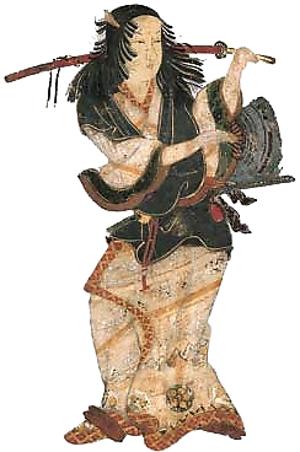
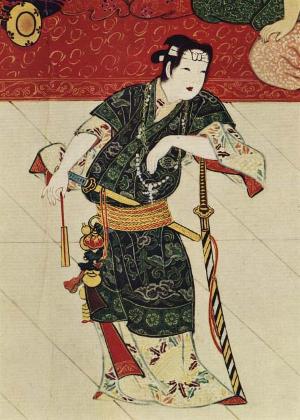
Min/Max Time :
10 / 20
Minutes
MapCode :
258 831 505*11
Description :
Izumo no Okuni (c.1572-c.1613) was well known as the originator of Kabuki, one of the traditional Japanese entertainments. Her father was a blacksmith from Taisha town. It is said she was a maiden in the service of the Izumo Taisha Shrine. During the Tensho era (1573-92) she went to Kyoto to solicit contributions for the repair of the main shrine of Izumo Taisha. In Kyoto she created a dance that is called Kabuki (literal meaning is "weird"). Her Kabuki Dance made her so famous that it is said she was invited to perform for Hideyoshi Toyotomi and Ieyasu Tokugawa. Soon after she became famous throughout Japan. Her dances were considered somewhat scandalous such that in 1629 the Shogun ordered them only performed by men.
Hours :
Open daily 24/7
Address :
Yamane Taishacho Kizukikita, Izumo, Shimane 699-0702
0.6
km / 0.4
miles
-
(1
minutes)

MapCode :
258 830 598*28
Website :
Hours :
Open 24/7
Address :
Karinomiya Taishacho Kizukikita, Izumo, Shimane 699-0702
0.3
km / 0.2
miles
-
(1
minutes)

MapCode :
258 831 812*00
Hours :
Open daily 24/7
Address :
Inasa Taishacho Kizukikita, Izumo, Shimane 699-0702
8.1
km / 5.0
miles
-
(14
minutes)
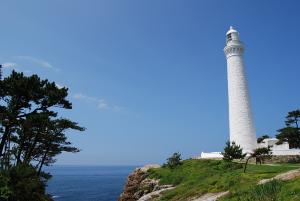
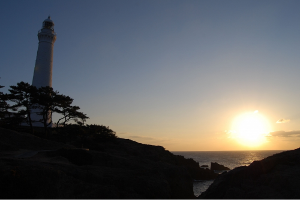
MapCode :
944 030 624*74
Phone :
085-354-5341
Description :
The 43.65 meter tall Izumo Hinomisaki Lighthouse was built in 1903, and is the tallest lighthouse in Japan. The height from sea level to the top of the lighthouse is 63.3 m/ ft. It has been selected as one of the top 100 most beautiful lighthouses in the world. Visitors can climb the 163 steps to the lighthouse observatory and enjoy the vast view spreading around them.
Hours :
Open daily 09:00 - 1630
Address :
1478 Taisha-cho Hinomisaki, Izumo, Shimane 699-0763
12.0
km / 7.5
miles
-
(21
minutes)
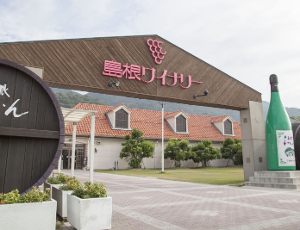
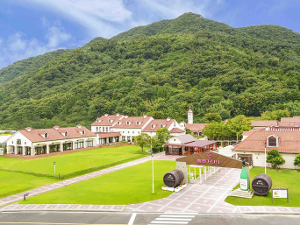
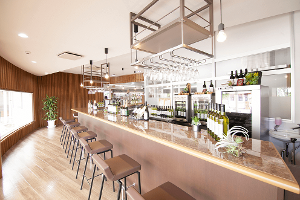


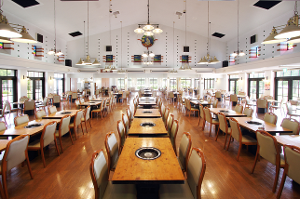
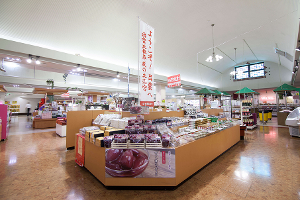
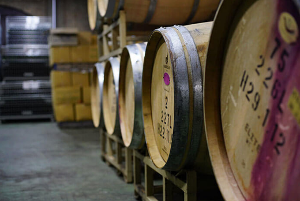

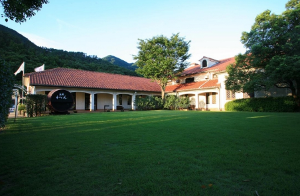
Min/Max Time :
20 / 90
Minutes
MapCode :
258 835 109*06
Phone :
085-353-5577
Website :
Hours :
Open daily 09:30 – 17:00
Address :
Hishinekami-264-2 Taishachō Hishine, Izumo, Shimane 699-0733